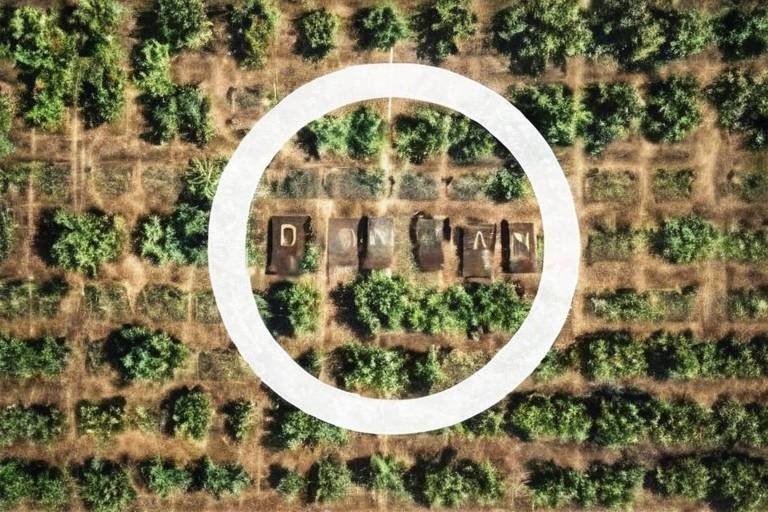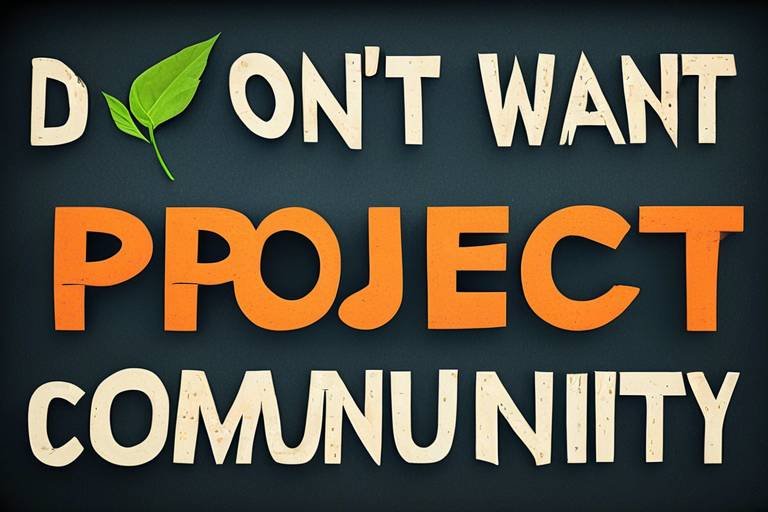How to Create a Sustainable Community Initiative
Creating a sustainable community initiative involves a series of strategic steps and collaborative efforts aimed at fostering environmental, social, and economic well-being in a localized setting. By identifying the unique needs of the community and building strong partnerships with stakeholders, such as residents, businesses, government entities, and organizations, sustainable projects can be effectively implemented to drive positive change.
One of the initial crucial steps in this process is identifying community needs. By understanding the specific requirements and challenges faced by the community, it becomes possible to tailor sustainable initiatives that directly address these issues. This targeted approach ensures that resources are utilized efficiently and effectively to bring about meaningful impact.
Building stakeholder partnerships is another key aspect of creating a sustainable community initiative. Collaboration with various local entities allows for the pooling of resources, expertise, and support necessary for the successful implementation of sustainable projects. By engaging residents, businesses, and organizations, a sense of shared responsibility and ownership is fostered, leading to greater community involvement and commitment.
Engaging local residents plays a vital role in the sustainability initiative. By involving community members in decision-making processes and project implementation, their active participation and support are ensured. This inclusive approach not only enhances the relevance of the initiatives but also strengthens community cohesion and empowerment.
Developing a comprehensive action plan is essential for guiding the execution of sustainable projects within the community. This roadmap outlines clear goals, objectives, timelines, and responsibilities, providing a structured framework for implementation. By establishing a strategic direction, the community can effectively track progress and measure success.
Implementing sustainable practices forms the core of community initiatives. By integrating eco-friendly solutions such as renewable energy sources, waste reduction programs, and green infrastructure, the community can reduce its environmental footprint and promote long-term sustainability. These practices not only benefit the environment but also contribute to cost savings and resource efficiency.
Educating and empowering the community through educational resources, workshops, and training sessions is crucial for fostering a culture of sustainability. By raising awareness and building capacity among residents, the community can embrace sustainable practices and drive positive behavioral change. Empowering individuals with knowledge and skills enables them to become active agents of change within their community.
Measuring the impact and progress of sustainable initiatives is essential for evaluating effectiveness and ensuring accountability. By establishing key performance indicators and evaluation metrics, the community can track the outcomes of its projects over time. This data-driven approach allows for continuous improvement and informed decision-making to enhance the overall impact of sustainability efforts.
Ensuring long-term sustainability involves implementing strategies for ongoing improvement, adaptation to changing circumstances, and securing funding for sustained initiatives. By fostering a culture of innovation and resilience, the community can navigate challenges and sustain its commitment to sustainability in the long run. With a proactive approach to planning and resource management, sustainable initiatives can thrive and evolve over time.

Identifying Community Needs
Exploring the steps and strategies involved in establishing a sustainable community initiative to promote environmental, social, and economic well-being within a local area.
Understanding the specific requirements and challenges faced by the community is crucial in developing effective sustainable initiatives. By conducting thorough assessments and engaging with community members, we can pinpoint key areas that require attention. Whether it's access to clean water, affordable housing, or job opportunities, identifying these needs forms the foundation for creating impactful and sustainable projects.

Building Stakeholder Partnerships
Building stakeholder partnerships is a crucial step in establishing a sustainable community initiative. By collaborating with various stakeholders, including local residents, businesses, government entities, and organizations, the initiative can gain valuable support and resources to drive sustainable projects forward. These partnerships create a network of individuals and groups who are invested in the well-being of the community and are willing to contribute to its sustainable development.
When building stakeholder partnerships, it is essential to engage in open communication and transparent decision-making processes. By involving stakeholders in the planning and implementation of sustainable projects, their perspectives and expertise can be leveraged to ensure the initiatives are tailored to meet the specific needs of the community. This collaborative approach fosters a sense of ownership among stakeholders, leading to increased commitment and dedication to the success of the initiative.
Furthermore, building stakeholder partnerships allows for the pooling of resources and expertise from diverse sectors. Local businesses can provide financial support or in-kind contributions, while government entities can offer regulatory guidance and access to infrastructure. Non-profit organizations and community groups bring specialized knowledge and grassroots connections that can enhance the impact of sustainable projects.
Establishing strong stakeholder partnerships also helps in creating a unified vision for the sustainable development of the community. By aligning goals and objectives with the values and priorities of stakeholders, the initiative can progress cohesively towards a shared vision of environmental, social, and economic well-being. This alignment fosters trust and collaboration among stakeholders, paving the way for long-term sustainability and success.

Engaging Local Residents
Engaging local residents is a crucial aspect of establishing a sustainable community initiative. By involving community members in the decision-making process and implementation of sustainable projects, you ensure their active participation and ownership in the initiative. This engagement fosters a sense of belonging and responsibility within the community, leading to greater success and long-term sustainability.
One effective way to engage local residents is to organize community meetings or forums where individuals can voice their opinions, concerns, and ideas regarding sustainable initiatives. This open dialogue allows for a collaborative approach to problem-solving and decision-making, ensuring that the community's diverse needs and perspectives are taken into account.
Moreover, creating opportunities for volunteer involvement in sustainable projects can further enhance community engagement. By inviting residents to participate in hands-on activities such as tree planting, recycling drives, or community clean-up events, you not only foster a sense of pride and ownership but also educate them about the importance of sustainable practices.
Utilizing digital platforms and social media channels can also be instrumental in engaging local residents, especially younger generations. By sharing information, updates, and success stories online, you can reach a wider audience and encourage active participation in sustainable initiatives.
Additionally, establishing partnerships with local schools, community centers, and religious institutions can help broaden the reach of your engagement efforts. By incorporating sustainability education into school curriculums, organizing workshops and seminars at community centers, or involving religious leaders in advocacy campaigns, you can empower residents with the knowledge and tools to embrace sustainable practices.
Ultimately, engaging local residents in the sustainable community initiative is not just about informing them but inspiring and empowering them to be active agents of change. By fostering a sense of community ownership and collaboration, you can create a sustainable environment where every individual plays a vital role in shaping a better future for all.

Developing an Action Plan
When it comes to creating a sustainable community initiative, developing a well-thought-out action plan is crucial for the success and effectiveness of the projects. An action plan serves as a roadmap that outlines the specific goals, objectives, timelines, and responsibilities involved in implementing sustainable practices within the community.
One of the key aspects of developing an action plan is to conduct a thorough assessment of the current environmental, social, and economic landscape of the community. This involves identifying the most pressing issues that need to be addressed through sustainable initiatives and setting clear and achievable goals to work towards.
Collaboration and communication are essential during the action planning phase. Building partnerships with stakeholders such as local residents, businesses, government entities, and organizations can provide valuable insights, resources, and support needed to execute sustainable projects successfully.
Creating a detailed timeline with specific milestones and deadlines is essential for keeping the project on track and ensuring progress is being made towards the established goals. Assigning responsibilities to team members and stakeholders helps in streamlining the implementation process and holding individuals accountable for their contributions.
Regular monitoring and evaluation of the action plan are necessary to assess the progress, identify any challenges or obstacles, and make necessary adjustments to stay on course. Flexibility and adaptability are key when it comes to implementing sustainable practices, as circumstances may change, requiring a shift in strategies.
Moreover, incorporating feedback from the community and stakeholders throughout the action planning process is vital to ensure that the initiatives align with the actual needs and preferences of the residents. By involving the community in decision-making and implementation, the chances of long-term success and sustainability are significantly increased.
In conclusion, developing an action plan for a sustainable community initiative involves careful planning, collaboration, clear communication, and continuous monitoring and evaluation. By laying out a structured roadmap and engaging stakeholders effectively, the community can work towards creating a more environmentally friendly, socially inclusive, and economically viable future for all its members.

Implementing Sustainable Practices
When it comes to within a community, it is essential to focus on integrating eco-friendly solutions that promote long-term environmental, social, and economic benefits. By incorporating renewable energy sources, waste reduction programs, and green infrastructure, communities can significantly reduce their carbon footprint and enhance overall sustainability.
One effective approach is to establish community gardens that not only provide fresh produce but also promote local agriculture and reduce the need for transportation, thus lowering carbon emissions. Additionally, implementing bike-sharing programs and public transportation initiatives can encourage residents to choose sustainable modes of transportation, contributing to a cleaner environment.
Another crucial aspect of sustainable practices is water conservation. Communities can implement rainwater harvesting systems and drip irrigation techniques to reduce water waste and promote efficient use of this vital resource. By raising awareness about the importance of water conservation, communities can work together to ensure a sustainable water supply for future generations.
Moreover, the integration of energy-efficient technologies such as LED lighting, solar panels, and energy-efficient appliances can significantly reduce energy consumption and lower utility costs for residents. These initiatives not only benefit the environment but also contribute to creating a more sustainable and cost-effective community.
Collaboration with local businesses and organizations is key to successfully implementing sustainable practices within a community. By partnering with environmentally conscious companies and non-profit organizations, communities can access valuable resources, expertise, and funding to support sustainable initiatives and drive positive change.

Educating and Empowering the Community
When it comes to creating a sustainable community initiative, one of the crucial aspects is educating and empowering the community. By providing educational resources, workshops, and training sessions, residents can gain valuable insights into sustainable practices and develop the skills needed to implement them effectively.
Empowerment plays a vital role in ensuring that community members feel motivated and capable of making a positive impact. Through empowerment initiatives, individuals are encouraged to take ownership of sustainable projects and become actively involved in driving change within their community.
Education serves as the foundation for raising awareness about environmental issues and the benefits of sustainable living. By offering workshops on topics such as recycling, energy conservation, and organic gardening, residents can learn practical ways to reduce their ecological footprint and contribute to a healthier environment.
Moreover, fostering a sense of community empowerment can lead to increased collaboration and collective action. When individuals feel empowered to make a difference, they are more likely to work together towards common goals, leading to a stronger and more resilient community.
Through educational initiatives, community members can gain the knowledge and skills necessary to make informed decisions about sustainable practices. By equipping residents with the tools they need to lead sustainable lifestyles, the community as a whole can move towards a more environmentally conscious future.

Measuring Impact and Progress
Measuring the impact and progress of sustainable community initiatives is crucial to assess their effectiveness and make informed decisions for future development. One of the primary ways to gauge the success of these initiatives is by establishing key performance indicators (KPIs) that align with the goals and objectives set forth in the action plan. These KPIs can vary depending on the nature of the project but commonly include metrics such as energy savings, waste diversion rates, community engagement levels, and economic benefits.
Tracking these KPIs over time allows stakeholders to monitor the performance of the initiatives and identify areas for improvement or expansion. Regular evaluation of the data collected helps in understanding the trends, successes, and challenges faced during the implementation phase. By analyzing the metrics, project managers can make data-driven decisions to optimize resources and strategies for maximum impact.
Aside from quantitative data, qualitative feedback from community members and stakeholders is also valuable in measuring the intangible aspects of sustainability initiatives. Surveys, focus groups, and interviews can provide insights into the community's perception of the projects, their level of satisfaction, and suggestions for enhancement. This qualitative data complements the quantitative metrics and offers a more holistic view of the initiative's impact on the community.
Furthermore, creating regular progress reports that summarize the achievements, challenges, and lessons learned from the initiatives is essential for transparency and accountability. These reports can be shared with stakeholders, funders, and the wider community to demonstrate the tangible outcomes of the sustainable projects and maintain trust and support. Celebrating milestones and successes along the way also boosts morale and motivates continued engagement from all involved parties.

Ensuring Long-Term Sustainability
Ensuring long-term sustainability of a community initiative is crucial to its continued success and impact. It involves implementing strategies that not only maintain the current projects but also allow for growth and adaptation over time. One key aspect of ensuring long-term sustainability is to establish a feedback loop with the community to gather insights on what is working well and what can be improved. By actively engaging with residents and stakeholders, the initiative can evolve to meet changing needs and priorities.
Additionally, developing partnerships with local businesses, government agencies, and non-profit organizations can provide ongoing support and resources for sustainable projects. These collaborations can help secure funding, access expertise, and expand the reach of the initiative beyond its initial scope. By building a network of partners committed to the long-term success of the initiative, it becomes more resilient to external challenges and fluctuations.
Another critical aspect of ensuring long-term sustainability is to invest in capacity building and training programs for community members. By empowering residents with the knowledge and skills to continue sustainable practices independently, the initiative can create a lasting impact that extends far into the future. Education plays a vital role in fostering a culture of sustainability within the community, ensuring that eco-friendly behaviors become ingrained in daily life.
Furthermore, incorporating monitoring and evaluation mechanisms into the initiative allows for the tracking of progress and impact over time. By regularly assessing key performance indicators and metrics, stakeholders can identify areas of improvement and make informed decisions to steer the initiative towards long-term success. This data-driven approach enables the initiative to adapt to changing circumstances and emerging challenges effectively.
In conclusion, ensuring long-term sustainability of a community initiative requires a holistic approach that combines community engagement, strategic partnerships, capacity building, and continuous evaluation. By fostering a sense of ownership and collective responsibility among residents, the initiative can thrive and create a lasting legacy of environmental, social, and economic well-being for generations to come.
Frequently Asked Questions
- What is a sustainable community initiative?
A sustainable community initiative is a collaborative effort aimed at promoting environmental, social, and economic well-being within a local area through long-term, eco-friendly projects and practices.
- How can I identify the needs of my community?
To identify the needs of your community, you can conduct surveys, hold community meetings, collaborate with local organizations, and engage with residents to understand their challenges and aspirations.
- Why is building stakeholder partnerships important?
Building stakeholder partnerships is crucial as it allows for the pooling of resources, expertise, and support from various entities within the community, fostering a more sustainable and inclusive approach to project implementation.
- What is the role of local residents in sustainable initiatives?
Local residents play a vital role in sustainable initiatives by contributing their insights, skills, and time to the planning, implementation, and monitoring of projects, ensuring that initiatives are tailored to meet community needs.
- How can I measure the impact of sustainable projects?
You can measure the impact of sustainable projects by tracking key performance indicators, conducting regular evaluations, and collecting feedback from stakeholders to assess the effectiveness, success, and areas for improvement of the initiatives.
- What are some strategies for ensuring long-term sustainability?
Strategies for ensuring long-term sustainability include continuous monitoring and evaluation, adapting to changing circumstances, fostering community ownership, and securing sustainable funding sources to support ongoing initiatives.



















